

Love After
Death*
(Charles Abrams Productions Inc./Abrams & Parisi, (c)1968**) Prod: Charles Abrams; Dir: Glauco del Mar; Scr: Antonio Velázquez; Photo: Peter Palian; Film Ed: [Peter] Palian-[Glauco]
del Mar; Sound/Mix: Haverland
Films
*aka Unsatisfied
Love
** at least one source lists a
"1965" date for this movie, but I think this is (a) possibly just a
typo, and (b) much too early. Another
source gives "1966" and seems a little
closer.
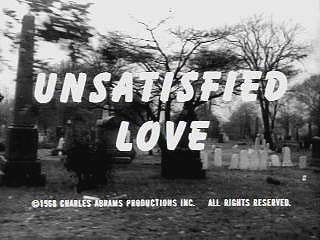
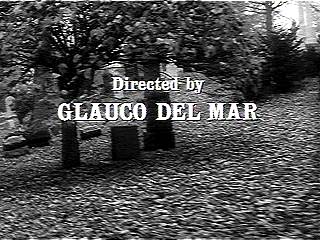
Cast: Guillermo de Córdova [=
Guillermo Crespo] (Mr. Montel),
Roberto Maurano (Dr. Anderson),
Carmin O'Neal (Sofía), Ángel
Mario Ramírez [aka Angelo Ramírez] (Manuel***), Gloris García and
Yolanda Signorelli (girls on
street), Juan Torres (Detective
Vázquez), Jennifer Welles (brunette lesbian), Cherie Winters
(blonde lesbian)
***credited as "Arturo," but
this character is played by another actor
Update (Feb 2022): The earliest theatrical date I have found for Unsatisfied Love is March 1967. It (or some film under this title) continued to get playdates throughout the 1970s and as late as 1981! Love After Death first shows up in September 1968, and plays through 1972 (although the 1971 film Is There Sex After Death? is sometimes advertised as "Is There Love After Death," and there may be some confusion here. However, it seems that while Unsatisfied Love was the original title, Love After Death did not replace it in all circumstances, as prints under both titles were circulating at the same time (unless, as noted, there is more than one "Unsatisfied Love" out there).
Notes:Why this movie has been tagged as an
"Argentine" import with "inserted" scenes is hard to
understand.The film was
clearly shot in New York--New York state license tags are visible
on the limousine in the cemetery scene, street and shop signs are in
English, and the cast and crew are composed of people who worked regularly
in movies in the New York area. The
lesbian sequence with Jennifer Welles is frequently cited as an
"added" scene but since "Guillermo de Córdova" appears
in the scene as well, does anyone think he was flown from
"Argentina" to New York just for that?The facts are clear, this was shot
entirely in the New York area--in Spanish--with mostly Puerto Rican talent
by a
Puerto Rican (or Dominican?) director who later went on
to make a number of other
features, both in New York City and Puerto Rico. Whether a Spanish-language version was
ever completed and released (and under what title) is unknown, but
although marred by a terrible canned music score and ludicrous dubbing, Love After Death was probably not
much better in its "original" form, since it was obviously
conceived as a typical 1960s New York skin flick. In other words, the plot (admittedly
weird) is little more than a framework for numerous scenes of nudity and
simulated sex. [Note: I have only found
one source--a 2006 program of the Videoteca del Sur
(http://www.videotecadelsur.org/), which semi-correctly identifies this
movie as "Puerto Rican" (sic).]
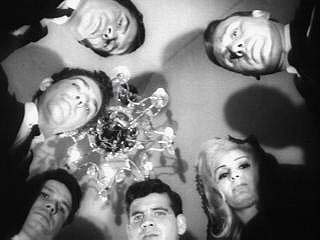
The wealthy Montel awakes in his
coffin. He can't understand why his
wife Sofía, Dr. Anderson, or anyone else at the wake doesn't remember he
suffers from catalepsy, and he is unable to communicate with them before
he
is buried alive. Dr. Anderson is
having an affair (of sorts) with Sofía--she claims she's still a virgin
despite being married to Montel for six months (he was "sick")
and won't sleep with Anderson until they're married. [Frankly, Carmin O'Neal does not
look virginal at all, she looks like she's been around the block
many times.]
As it develops,
Sofía really loves Manuel, identified as a "friend" of Montel
(Arturo is Dr. Anderson's secretary, but both Manuel and Arturo at times
appear to be working for the doctor).
Montel claws his way out of the
grave and after changing clothes, heads for the city.[The structure he enters is later
referred to as "the castle" and is apparently supposed to be his
home, but it actually looks more like a church or some kind of
monastery.]
He abducts a blonde on
the street and forces his way into an apartment--pushing aside the woman
who lives there--where he undresses and attempts to seduce his
victim. However, when she responds
ardently to his caresses, Montel is unable to perform and flees.[In an amusing bit, the turned-on blonde
coyly gestures to the apartment owner but the older woman refuses the
offer.] Later, Montel visits a
nightclub and sneaks into a dancer's dressing room to observe her lesbian
foreplay with another woman; just when he decides to join the party,
Montel realizes the dancer is a transvestite and hurriedly departs. In the next sequence, a blonde and
brunette undress and begin to have sex in their apartment. Montel hides in their closet; when his
peeping is discovered the brunette attempts to undress the uninvited guest
but Montel leaves once more, "unsatisfied."
Montel observes Sofía and Dr.
Anderson leaving the latter's apartment and vows revenge on his unfaithful
wife and her lover. But first, he
helps a young woman who has dropped her packages on the street and of
course this leads to an invitation to her bedroom.Montel successfully closes the deal:
"Now they can't say I'm sick! Now I'm a
man!" Police detective Vázquez, who had
earlier notified Sofía that her late husband's corpse had vanished, now
tells Sofía and Anderson that Montel is actually alive "in the
castle."Anderson orders
Manuel and Arturo to kill both Vázquez and Montel, but the detective kills
the henchmen in a shootout in the park. Meanwhile, Montel is back to his old
tricks, sneaking into a room where a (very) hairy man is having sex with a
tan-lined blonde. Montel knocks out
the man in the bathroom and takes his place in bed with the sleeping
blonde. When she wakes up, she
pushes Montel away and he has to flee once more. Now it's time for the final
reckoning. Montel enters Dr.
Anderson's apartment and stabs him to death on the balcony.
He then strips Sofía and kisses her, but
roughly pushes her away when she responds ardently. Clad only in a sheet, she tries to flee but
is cornered by her "late" husband on the roof and
strangled. Detective Vázquez
arrives and grabs the murderer but Montel vanishes, leaving just his
jacket in the policeman's hand. Glauco del Mar's direction of Love After Death is hardly
inspired, but it does have its wacky moments. As noted above, the dubbing is quite
bad--and not even close to being in sync with the lip
movements--but most of the "dialogue" is accomplished via
voiceover narration, an economical way around the problem. Del Mar also displays a penchant here
for giant closeups of lips, eyes, ears, and other facial features (several
shots of Montel french-kissing Sofía are particularly gross).There are also a couple of (possibly
coincidental)
The DVD version released by
Something Weird has a very strange "look" during the last
several scenes, almost as if the action is unfolding in very slight
slow-motion. This first becomes
noticeable during the hairy guy-blonde sequence and continues for several
additional scenes. The music score is not affected, which suggests the
problem did not lie in the transfer to DVD, but in the actual film
processing. The nudity and sex in Love After Death (the title
suggests necrophilia but nothing of the sort appears) are soft-core but
still fairly explicit.No
full-frontal nudity is shown (and in fact pubic hair is only glimpsed in
fleeting shots) but the scene featuring the hairy guy and the blonde is
reasonably graphic simulated sex. It's interesting to note that the picture includes a variety of
sex: straight, lesbian, transvestite/woman, and even non-consensual. [Del Mar's Tigresa (1970) can beat this
lineup, with rape, straight sex, two transvestites, and multiple
lesbian scenes!] It's impossible to judge the
performances in the film impartially, but "Guillermo de Córdova"
(who slightly resembles actor Paul Reuben) has a sort of demented-imp look
about him (while Roberto Maurano at times looks like Mel Brooks in Blazing Saddles). "De Córdova" also appears--as
"Guillermo Crespo," more likely his real name--in Tigresa as a cross-dressing police
detective! Carmin O'Neal is
actually scary-looking at times, and it's difficult to understand why Dr.
Anderson and Manuel would be interested in her (except for the money she
presumably inherits from her late husband). One piece of fascinating trivia
about the cast of Love After
Death is the (brief) presence of actress Yolanda Signorelli, who later
married Harold von Braunhut, the genius behind the mail-order "sea
monkeys" sold via ads in comic books during the 1960s, '70s, and
later. In addition to Signorelli,
two other New York adult-film veterans appear in the film, Jennifer Welles
and Cherie Winters. A curious
coincidence: one of Welles' later credits (before she moved into hardcore)
was Is There Sex After Death?
(1971). Love After Death is a curiosity
piece and at 71 minutes is worth looking at once, but it's hardly a
satisfactory movie by most standards. Oh, and it was not shot in
Argentina!! 

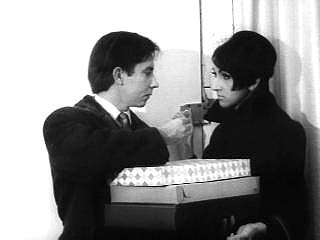
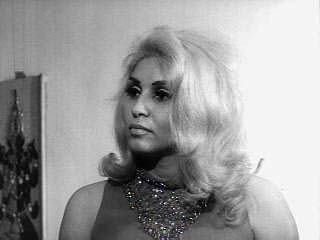
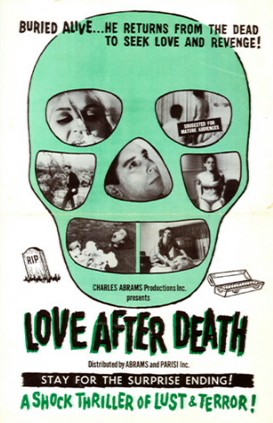 stylistic similarities with El Callao (a
better film in many ways)--both films
include some
Doris Wishman-like shots of walking feet, and both films conclude with a
rooftop sequence.
stylistic similarities with El Callao (a
better film in many ways)--both films
include some
Doris Wishman-like shots of walking feet, and both films conclude with a
rooftop sequence.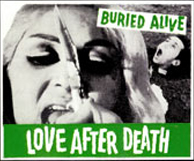
Back to
The Films of Glauco del Mar.
The Nuyorican
Films Page


Page created 18
December 2007 by David Wilt. Updated to fix html issues, 9 Feb 2022. Email to dwiltNOSPAM@umd.edu (remove
NOSPAM)